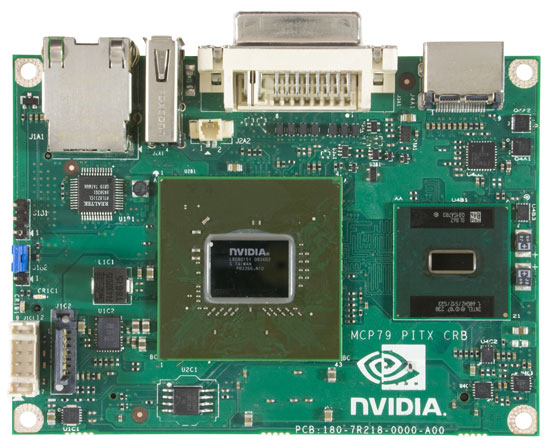Sony UX is a Core Solo around 1.2GHz, not a Core 2. VIA C7 is a joke that's substantially weaker than Atom. I'm confident that a 2GHz dual core Cortex-A15 would have no problem beating either of those, and I'm also confident it'll have no problem beating this CPU (1GHz dual core Bobcat) or anything Intel is currently offering in this TDP range (currently just Medfield, 1.3GHz turbo to 2GHz single core Atom, but perhaps will include Clover Trail - dual core up to 1.8GHz Atom). In fact, with AMD if you want a higher clock speed you have to take on the 18W Zacate line. For Intel you're stuck with Atom, with the nearest better uarch being the 17W Ivy Bridge - the ULV Core Solo days are over. Want to put something like that in something like Pandora? Tough shit.
Yes there were lots of little netbooks, UMPCs, and tablets that used x86. These are not Pandora's form factor and these are definitely not Pandora 2's form factor. And you know what? UMPCs never caught on. I wonder why. But you want Pandora to try to recreate this? The closest you came with something like Sony UX is still larger than the original Pandora, and lasted 1.5 hours if you used the CPU intensively. But more to the point it cost a small fortune, not in any small part due to the CPU which would have been cherry picked lowest voltage of the lowest voltage, probably something no more than a tiny percentage of the chips could hit. And you paid for this. But these days Intel doesn't do that anymore, because they'd rather sell you an Atom, and AMD doesn't do that because they don't have the market for it. So again, want to recreate your old UMPC processor? Tough shit.
I know you have strong special interests for x86 but they don't apply to most people, least of all not most people on these forums. Pandora 2 isn't using a CPU + I/O chip that needs 6W, and showing me some tablet that runs on it changes nothing. Now stop arguing with me about hardware specs, you don't have enough idea of what you're comparing. Your argument is a waste of time because x86 does NOT fit most criteria, you can't hand wave parts that have an order of magnitude worse perf/W like your Bobcat chip.



